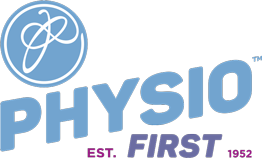Soft Tissue Care
As human beings we wear our soft tissues over the skeleton like clothing. As such, if it becomes tight it hinders joint movements of the underlying skeleton. Our soft tissues also provide total communication with the underlying structures in the form of connective tissue and nerve. When things go awry with the soft tissues the joints will be affected. By the same token, if at a joint level we have an injury such as a sprain, this injury is generally of soft tissue, usually ligament and the muscles and connective tissues through to the skin become involved with that injury and will need to be addressed by treatment.
Human soft tissues are made up of skin, muscle, nerve, fat, fascia (connective tissue) cartilage, ligament and blood vessels. It is the intimate interconnections between all these systems which make the body ‘work’. They provide locomotion of the skeleton and its joints, protection from harm, communication between structures, nutrition and health. They also allow a body to perform work, play, rest and avoid danger.
Our soft tissues enable us to do absolutely everything we do whether that is sitting in a chair at a computer for seven hours or running a marathon. They obediently obey our demands, as best they can, for a good, long life. However, they can sometimes become injured by over-use, under-use, incorrect use, disease or trauma. Physiotherapy is the perfect medium for caring for the soft tissues when ill or injured.
When a person’s soft tissues are crushed, tethered, over-stretched, strained or even cut the body tries to sort it out by the process of inflammation. The signs of inflammation are heat, redness, swelling, bruising and, of course, pain. A sprained ankle is a typical and very common soft tissue injury.
Your physiotherapist is trained to assess the nature of the injury and to assist the inflammatory process in healing the tissue as efficiently and effectively as possible. Initially this will be by positioning the joint so that the ligaments aren’t further stretched and hurt. Tape systems are often used to guide or restrict over stretched tissues.
A new injury needs careful management and advice in order to prevent further swelling, pain or dysfunction. Management of the sprain will involve strengthening the surrounding muscles so that the injured ligament has as much support and backup as possible to stop it from tearing. The nerve tissue will need re-education and guidance by what physios call “proprioceptive exercise” so that the joint doesn’t over-stretch during the healing process. If you need a physio in Falmouth, please contact Jane using the button below.




